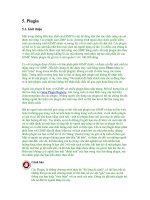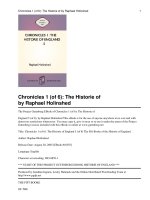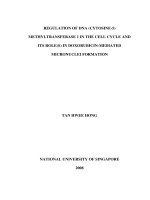- Trang chủ >>
- Mầm non - Tiểu học >>
- Lớp 5
5 5 1 earthquake the disaster that rocked san francisco
Bạn đang xem bản rút gọn của tài liệu. Xem và tải ngay bản đầy đủ của tài liệu tại đây (3.42 MB, 14 trang )
Suggested levels for Guided Reading, DRA,™
Lexile,® and Reading Recovery™ are provided
in the Pearson Scott Foresman Leveling Guide.
Earthquake!
The Disaster That Rocked
San Francisco
by J. Matteson Claus
illustrated by Don Dyen
Genre
Historical
fiction
Comprehension
Skills and Strategy
• Plot and Character
• Author’s Purpose
• Prior Knowledge
Scott Foresman Reading Street 5.5.1
ISBN 0-328-13562-3
ì<(sk$m)=bdfgc < +^-Ä-U-Ä-U
Reader Response
Earthquake!
1. Who are the main characters in this story? Choose two
and tell what happens to them.
2. Before you read this book, what did you know about
earthquakes? What did you know about the 1906
earthquake? What new things did the story teach you
about each topic? Use a chart like the one below to
record your answers.
The Disaster That Rocked
San Francisco
What I Know
About
Earthquakes
What I Know
About the 1906
Earthquake
What I Learned
About
Earthquakes
3. Look up the word spectacle. What is the Latin root
and what does it mean? What is a spectacle and what
are spectacles? Use each word in a sentence.
4. Based on what you read, list things to do to prepare
for an earthquake or similar disaster.
by J. Matteson Claus
illustrated by Don Dyen
Editorial Offices: Glenview, Illinois • Parsippany, New Jersey • New York, New York
Sales Offices: Needham, Massachusetts • Duluth, Georgia • Glenview, Illinois
Coppell, Texas • Ontario, California • Mesa, Arizona
Bob Allen’s Story
“Bob, get up! It’s an earthquake!”
I jumped out of bed at the first sound of Ethel’s
voice. For a second, I didn’t realize what was
happening. I even checked the clock. It was 5:12 in
the morning.
“The children!” she cried.
The whole house trembled beneath my feet.
The furniture was jumping up and down as if it had
suddenly come to life.
Every effort has been made to secure permission and provide appropriate credit for
photographic material. The publisher deeply regrets any omission and pledges to
correct errors called to its attention in subsequent editions.
Unless otherwise acknowledged, all photographs are the property of Scott Foresman,
a division of Pearson Education.
Photo locators denoted as follows: Top (T), Center (C), Bottom (B), Left (L), Right (R),
Background (Bkgd)
22(B) ©Corbis; 23 ©Corbis; 24 © Roger Ressmeyer/Corbis
ISBN: 0-328-13562-3
Copyright © Pearson Education, Inc.
All Rights Reserved. Printed in the United States of America. This publication is
protected by Copyright, and permission should be obtained from the publisher
prior to any prohibited reproduction, storage in a retrieval system, or transmission
in any form by any means, electronic, mechanical, photocopying, recording, or
likewise. For information regarding permission(s), write to: Permissions Department,
Scott Foresman, 1900 East Lake Avenue, Glenview, Illinois 60025.
2 3 4 5 6 7 8 9 10 V0G1 14 13 12 11 10 09 08 07 06 05
3
Ethel yanked at the doorknob
on the bedroom door. “It won’t
open!” she cried.
Then the trembling stopped.
The only sound was Ethel pulling at
the door. The wall above the door
had shifted. I grabbed the knob
and pulled. We had been through
small quakes before. Silence always
followed the first shock. Then, 10 or
20 seconds later, the quake would
hit with full force.
“Sally!” I yelled as I yanked
at the knob. “Don’t worry, we’re
coming!”
“Mom! Dad! Help!” Sally called
from the back of the house. “We’re
stuck!”
4
5
The house shuddered like a
small ship being slammed by a
huge wave. I reached Charlie’s
door just as Ethel reached
Sally’s. The wall on the second
floor had fallen. The children
and their furniture were no
longer there.
“Dad! Mom! Help!” It was
Sally, calling from somewhere
behind the house. We dashed
back downstairs to the kitchen.
We could open the back door,
but a tall pile of fallen bricks
blocked our way. “Don’t worry!
We’re coming!” Ethel yelled to
Sally.
The doors jammed, so
I threw a chair through a
window and followed. As I
crawled over the rubble, the
trembling stopped again.
The earthquake lasted only
a minute. That’s all it took to
change my life forever on that
morning of April 18, 1906.
6
7
Sally Allen’s Story
It was eerie. One of the first people I thought
of was Miss Jones, the school nurse. She said most
head cuts look worse than they really are. So I wasn’t
surprised when I put my hand to my head and it
came back bloody. Charlie’s pajamas were ripped,
and he had cuts on his face, hands, and legs. Yet all
he could do was grin. “Wow!” he said. “Did you see
me? I just slid out on my bed!”
8
“Are you okay?” I asked him. I’m eleven years old.
He’s seven. Sometimes he’s a silly seven.
“Sure I’m okay!” he said. “Where are Mom and
Dad?”
I wasn’t sure. I had called, but no answer. I was
worried but said they were coming anyway.
“I don’t see them,” he said, looking at the pile of
bricks and shingles that used to be the back wall of
our house. There was dust everywhere. It was crazy,
but it made me think of Mom, and how mad she
would be because she had just cleaned.
I got up and made Charlie get up, too. “I told you,
I’m okay!” he said. He was. But the world around us
sure wasn’t.
9
“Over here!” someone yelled. A man across the
street was pointing at us. “Those two kids—they’re
hurt!”
A big fireman ran over to us. “Okay, kids,” he
said. “Let’s get to the hospital.”
And before I could protest, he picked up Charlie
and headed for a wagon. “Come on, Sally!” Charlie
said. He was having fun.
“Your brother’s right,” the fireman said. “That
shock wasn’t the last. You’ll see.”
“I’m not leaving without my mother and father!”
I said.
“Honey,” the fireman said, “you’d better stay
with your brother. He needs you now.”
I still couldn’t believe what had happened. At the
first shock, my bed bounced and bumped me onto
the floor. I ran to stand under an open doorway.
Dad said it was a safe place. I couldn’t stand there
because I couldn’t open the door! “Mom! Dad!
Help!” I called.
The first shock stopped, and a half minute later,
the big one hit. The chimney ripped away from the
wall. Then the wall went and I fell backwards. I
awoke to see the furniture sliding away and me too!
A tree branch slowed my fall and slammed me onto
the ground.
The street was a mess. Battered houses leaned
against each other like wounded soldiers. Telephone
poles had been snapped in two. Broken electric
power lines lay coiled in the road like snakes.
Neighbors in nightclothes hollered to each other.
10
11
The Fireman’s Story
San Francisco firemen are always ready
for a quake. They say the severe ones come
only every hundred years, so I didn’t expect
to see one.
But I did. I’d been up all night fighting
a fire. I was heading back to the station
when the first shock came. The two horses
pulling my supply wagon got spooked. I
was just getting them under control when
the big one hit. Buildings on both side of
the road just fell apart.
After the trembling stopped, I waited
for the horses to get calm. Then I moved
on. Lots of people were hurt. I put three
men with injuries into the wagon. I also
picked up two children who were all
banged up. I dropped all five at the Central
Emergency Hospital.
I never got back to the firehouse. A fire
had broken out in a nearby laundry. We
fought it for about two hours. Finally, the
last flames withered and died.
By this time, plumes of smoke were
rising all over the city. The earthquake had
cracked gas pipes, and the leaking gas was
fueling many of the fires.
At around 8:15 in the morning, the city
was jolted again. This aftershock knocked
down buildings that had been weakened
three hours earlier. It also touched off
more fires.
12
13
We went from fire to fire all day
long and struggled without water. The
shifting earth had crushed the city’s
water pipes. Sometimes we got lucky
and found water storage tanks or wells
near fires. But that was rare.
At one point, fifty fires were
burning all over the city. Fires leapt
from building to building, across
streets and intersections. This went on
for three days.
The U.S. Navy sent ships to battle
the fires nearest the bay. U.S. Army
soldiers contained some fires by
taking away their fuel. Fires don’t
like stopping at the firebreaks. So the
fires moved with such force that they
jumped over the breaks.
The U.S. Army had also set up tent
camps for the homeless victims of the
earthquake. I had lost my home, too.
So when the fires were out, I went to a
camp to rest and get shelter.
14
15
Men, women, and even children went through
the camp hunting for loved ones. One man had
a big bandage around his head. He kept asking,
“Has anyone seen a girl named Sally? A boy named
Charlie?”
“Well, I’ll be,” I said. “Those were the names of
the kids I took to the hospital!”
He almost hugged me at the news, but I had
to tell him the bad news. “The Central Emergency
Hospital burned down yesterday,” I said. “All the
patients were moved away.”
16
“Thank you,” he said wearily. “I’ll go to the other
hospitals. They have got to be somewhere.”
After he left, soldiers came to the camp to pass
out food. One officer said he heard that more
than 200,000 people were living in camps like ours.
Dr. Martin’s Story
I reached the Central Emergency Hospital later
than usual because I had to walk. The hospital had
been badly damaged. When I got there, firemen had
carried most of the patients across the street to a
sports arena. Doctors, nurses, and Red Cross workers
were setting up a makeshift hospital there.
17
It was an awful scene. Surgeons operated on
people whose arms and legs had been crushed.
Mothers carried in burned babies. We ran out of
supplies. Men broke into drugstores to get medicine
and bandages.
Soon we were ordered to leave. The fire was
getting near us. We moved the patients to the
grass by Golden Gate Park. Anyone who could walk
helped. One little boy carried a box of medicine. His
sister carried a baby whose mother had died. They
were nice kids. The boy found my spectacles on the
grass.
When I returned to the park the next day, soldiers
were putting up tents for the patients.
Near midnight, I was too tired to go on without
sleep. My wife Dora and our daughter made a tent
out of sheets in front of our house. One of the
saddest scenes, my wife said, was a man who was
hunting for his two children. “He said he had been
trying to reach them when a falling brick knocked
him out. When he came to, he found his wife with a
broken leg and his children gone.”
“Did you get his name?” I asked.
“No,” Dora said, “but his children’s names were
Sally and Charlie. I think that’s what he said.”
18
19
For a few seconds, the tired man just pondered
the question. Then he gasped. “Do you really know
where they are?”
“I think so. Come with me.”
We went to the park, stopping at nearly every
tent. “Thank God,” the father said when he saw
them and ran to embrace them. “Thank God.”
The military helped out a lot. They brought in
doctors, nurses, and medical supplies. They also
helped provide rations such as food and water.
“I met those children today at the park,” I said.
The little boy helped me find my spectacles.”
I headed back to the park around 6:00 A.M. Dozens
of new patients waited for help at the park. I forgot
about the two lost children.
On the way to visit a hospital that afternoon, I
spotted a man with a bandaged head. While that
was not unusual, it was unusual to stop and talk to
people passing by. I asked him. “Are you looking for
Sally and Charlie?”
20
21
By dawn on April 21, the fires finally burned
themselves out. They had turned five square miles of
the city into ashes. More than 3,000 people had died.
Some 28,000 buildings had been destroyed. Maybe
250,000 people had no homes.
You would think only sadness and anger would
remain after all that. Yet, even among my sickest
patients, I found hope. People took care of each
other, shared food, and helped to build shelters.
People sent money from all over the country.
We had lived through three days of horror. But
the tragedy brought out the best in all of us. And
that’s something I’ll never forget.
22
23
Lessons from the Past
Reader Response
Scientists studied the 1906 earthquake for years.
They learned how the ground moves and how to
make buildings stand up to earthquakes. Those
lessons have made us smarter about earthquakes and
coping with them.
In 1989, another big quake hit San Francisco. This
time, the city was ready. Many buildings of 1906 had
been replaced with stronger structures built to stand
up to major shocks and fires.
The 1989 earthquake did great damage. But only
62 people died, and it left only about 12,000 people
without homes. In contrast, the 1906 earthquake
killed more than 3,000 people and left 250,000
people homeless.
Scientists still don’t know how to accurately
predict earthquakes. But they learn more about
them every time the earth shakes.
1. Who are the main characters in this story? Choose two
and tell what happens to them.
2. Before you read this book, what did you know about
earthquakes? What did you know about the 1906
earthquake? What new things did the story teach you
about each topic? Use a chart like the one below to
record your answers.
What I Know
About
Earthquakes
What I Know
About the 1906
Earthquake
What I Learned
About
Earthquakes
3. Look up the word spectacle. What is the Latin root
and what does it mean? What is a spectacle and what
are spectacles? Use each word in a sentence.
4. Based on what you read, list things to do to prepare
for an earthquake or similar disaster.
24









